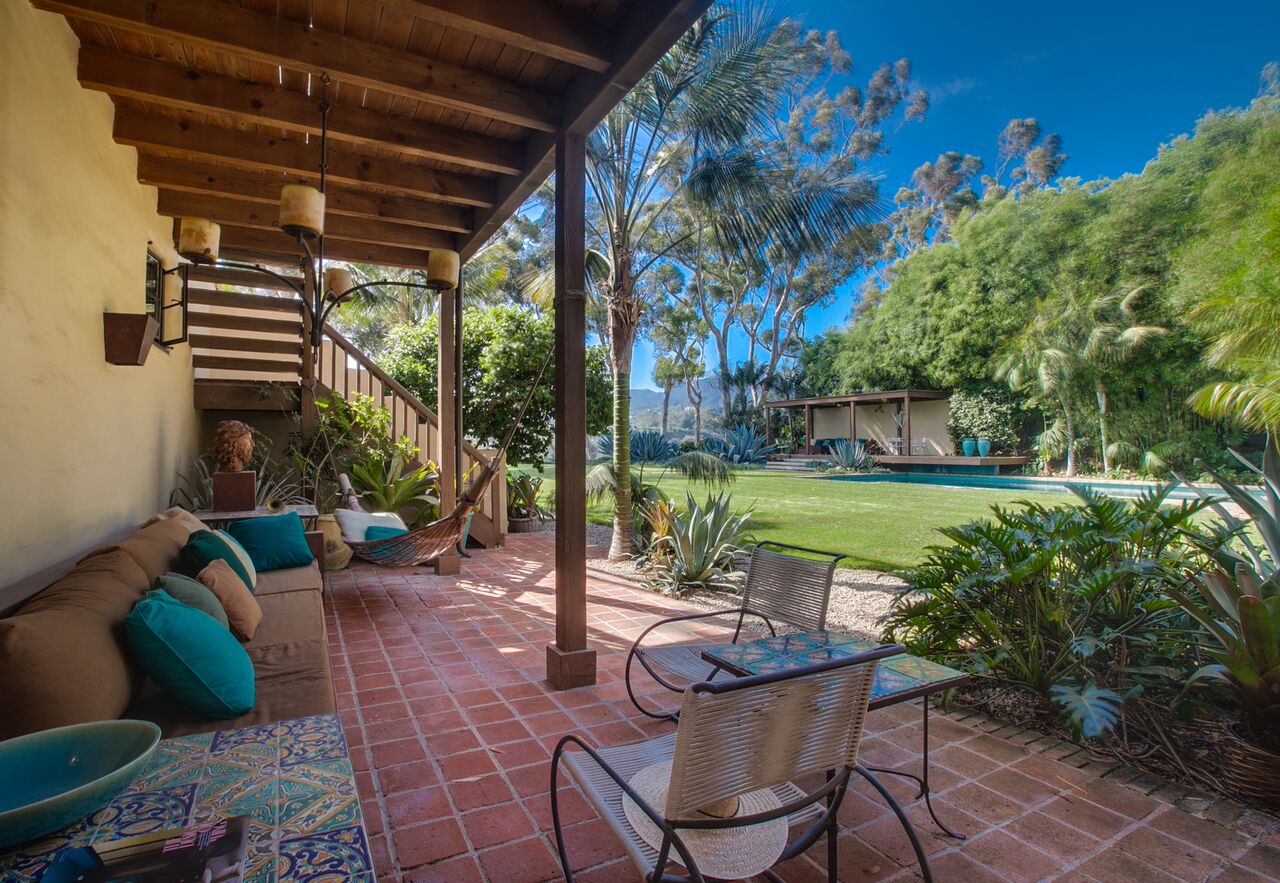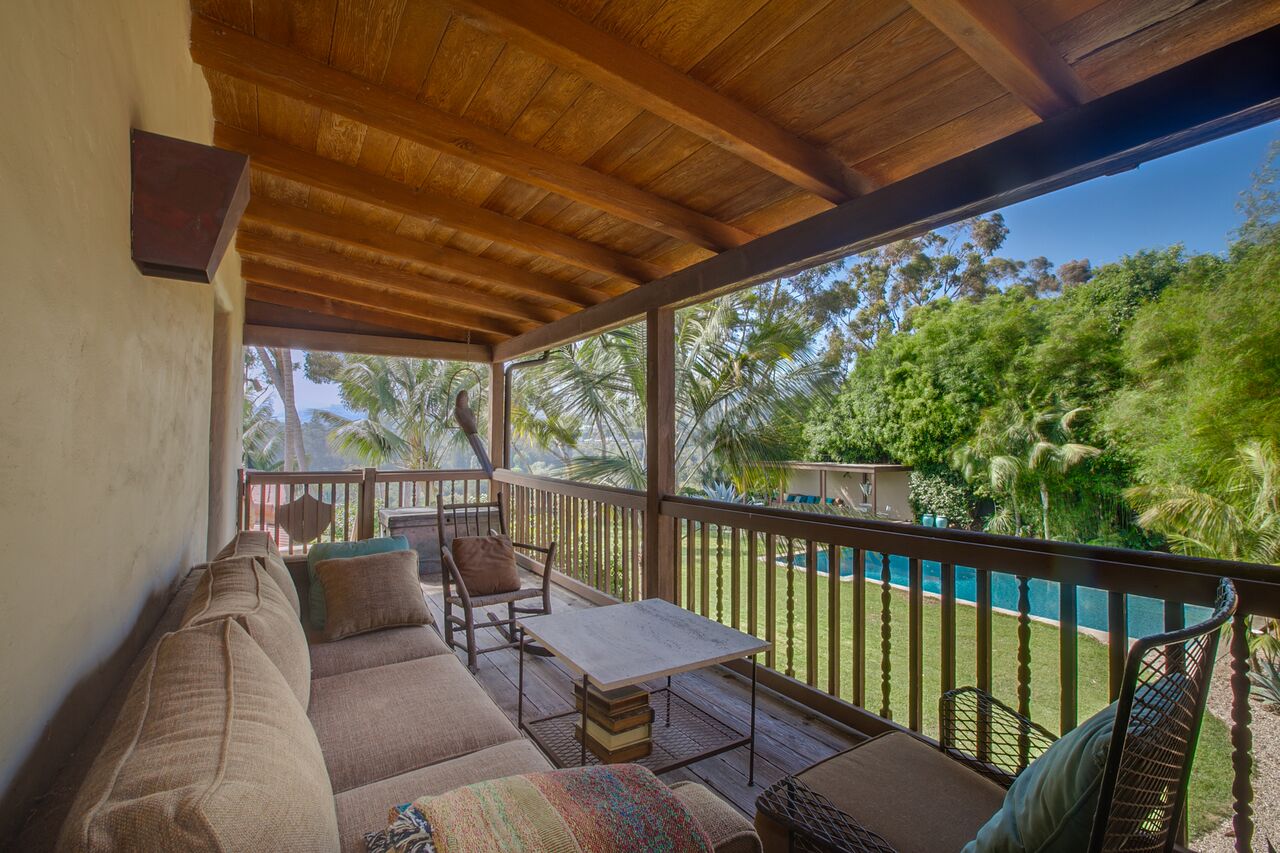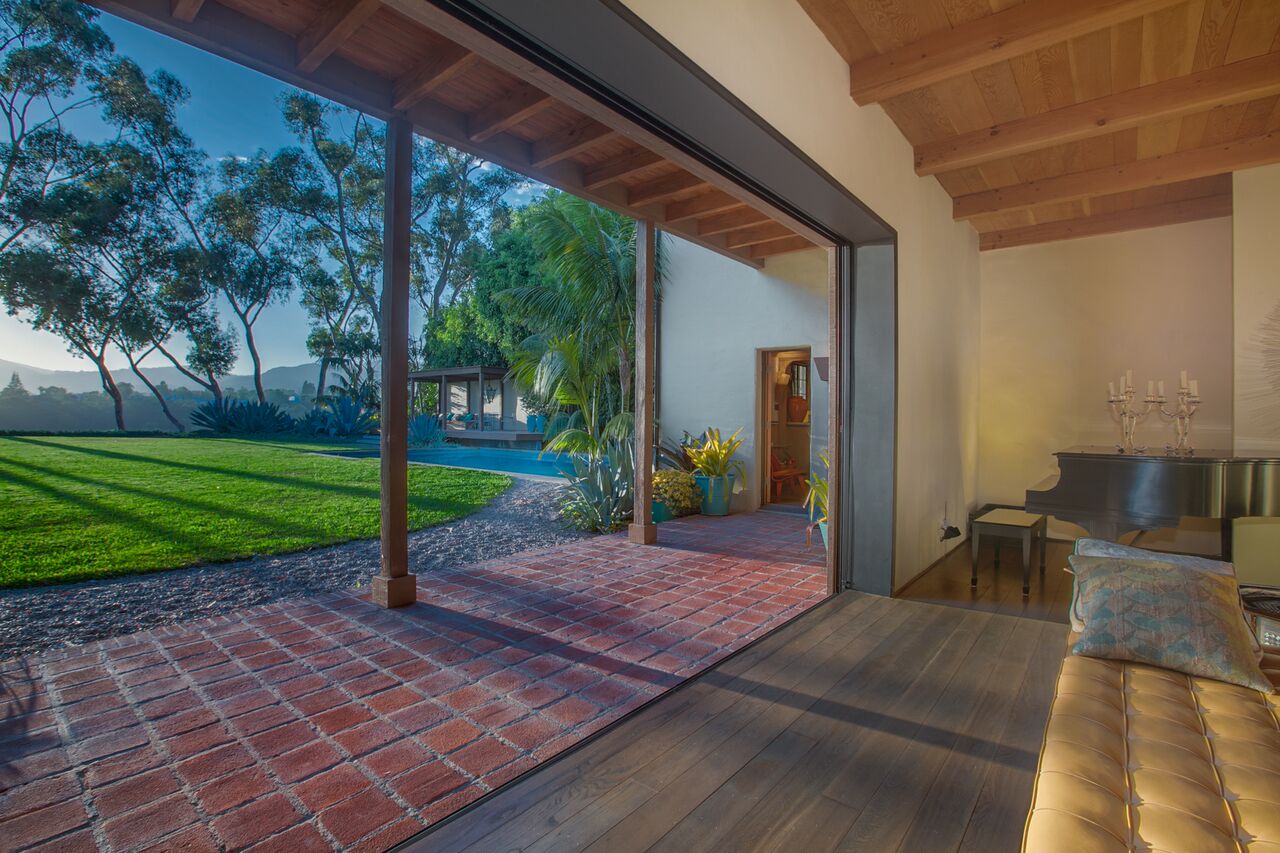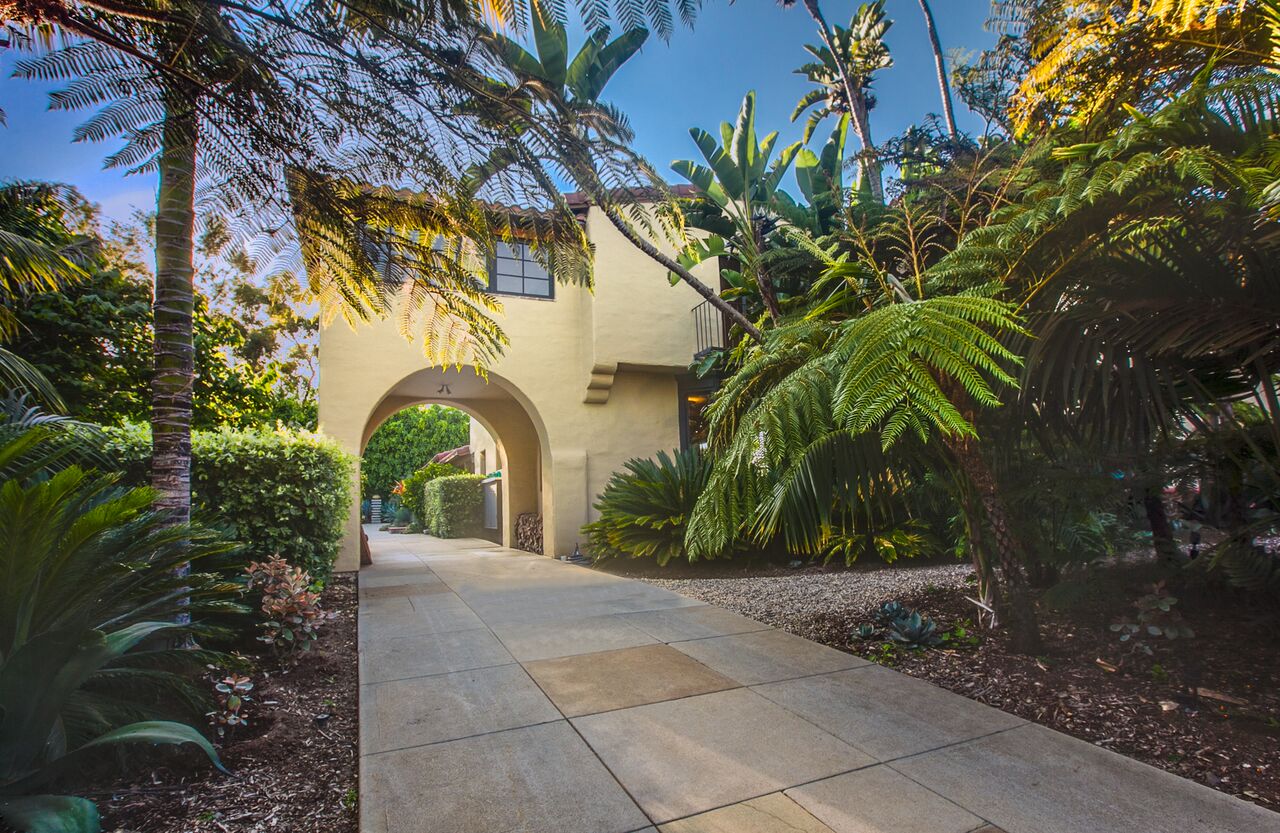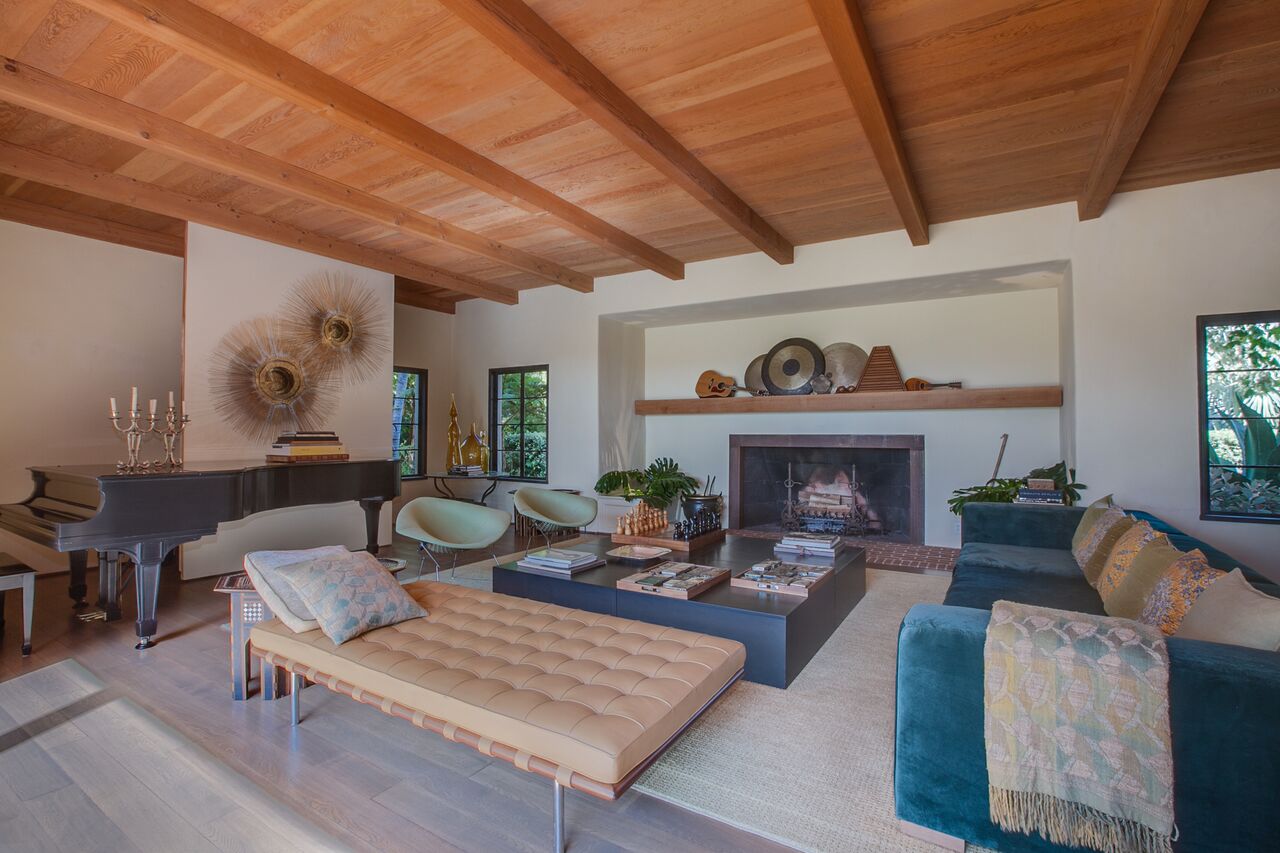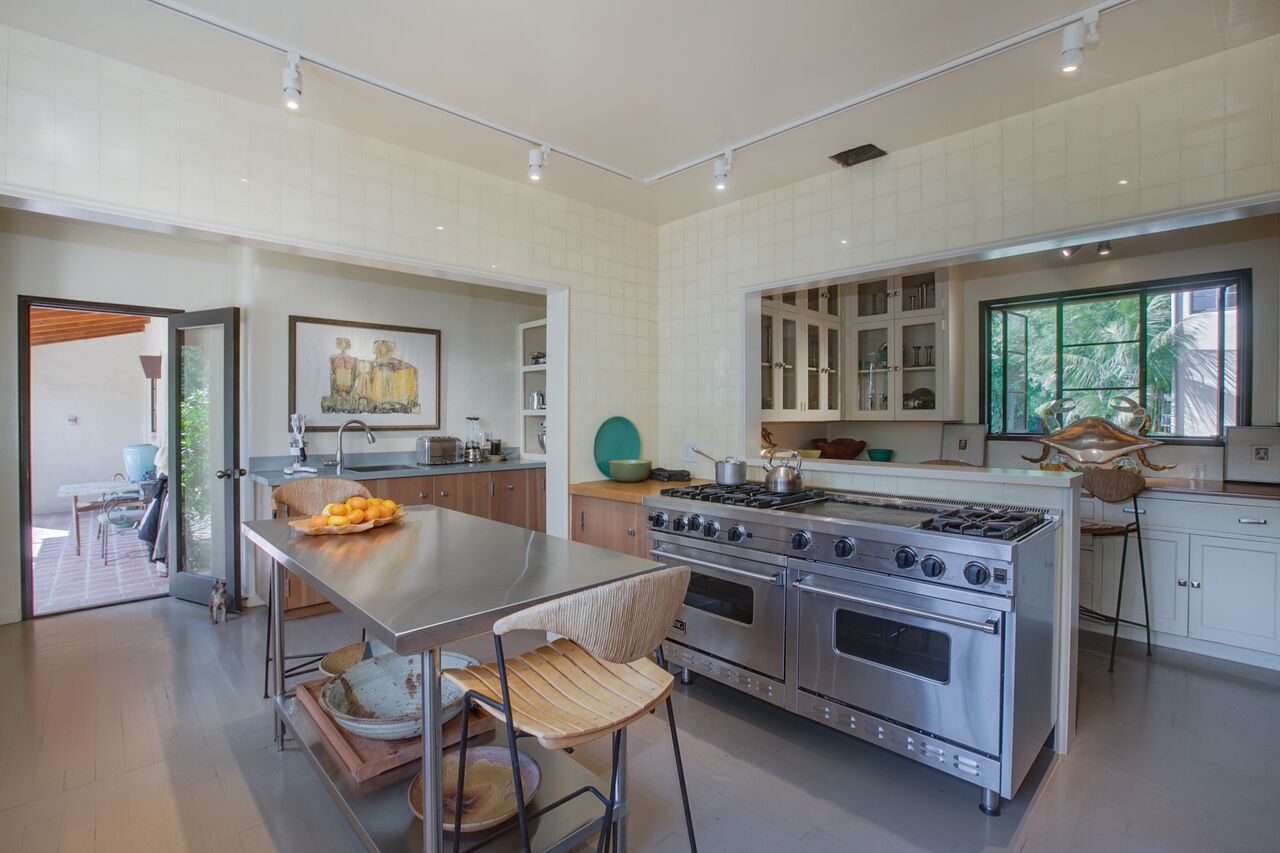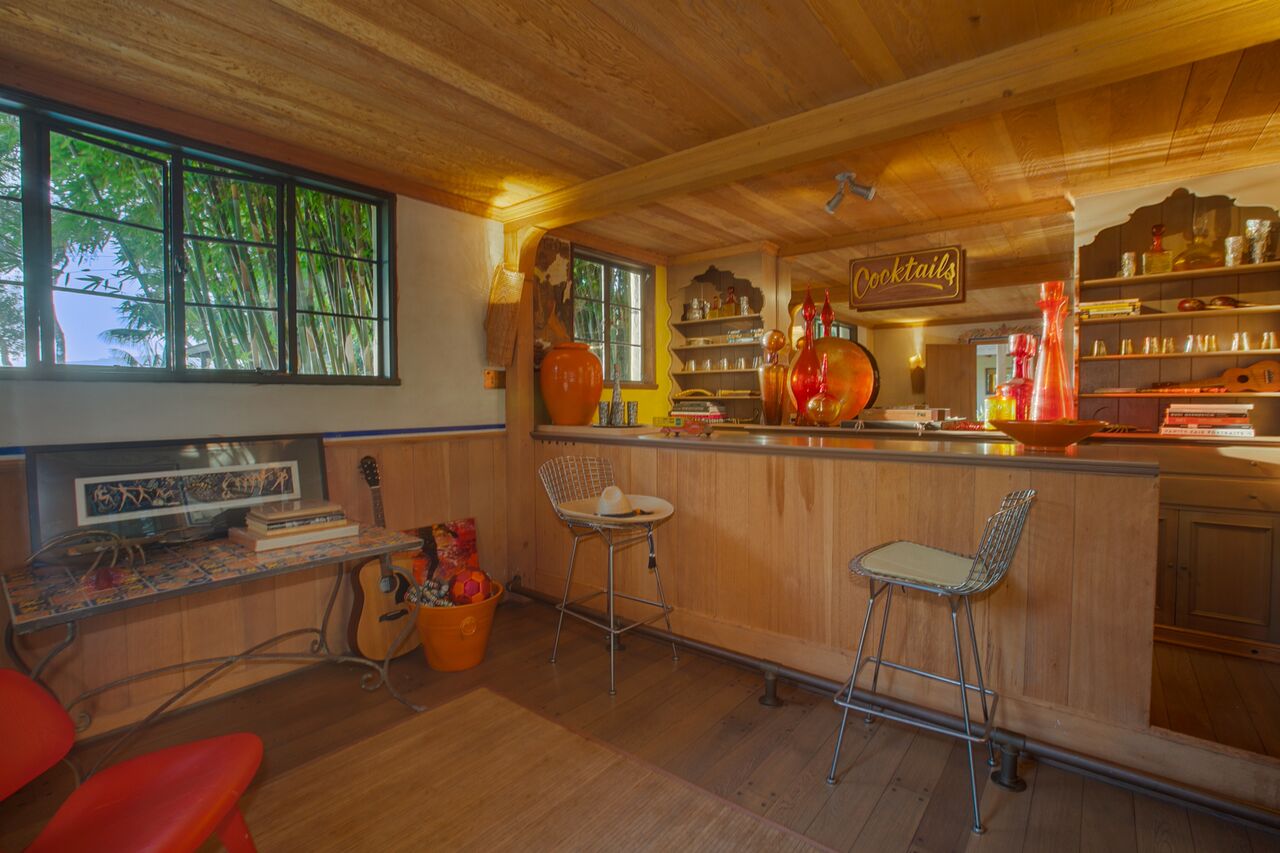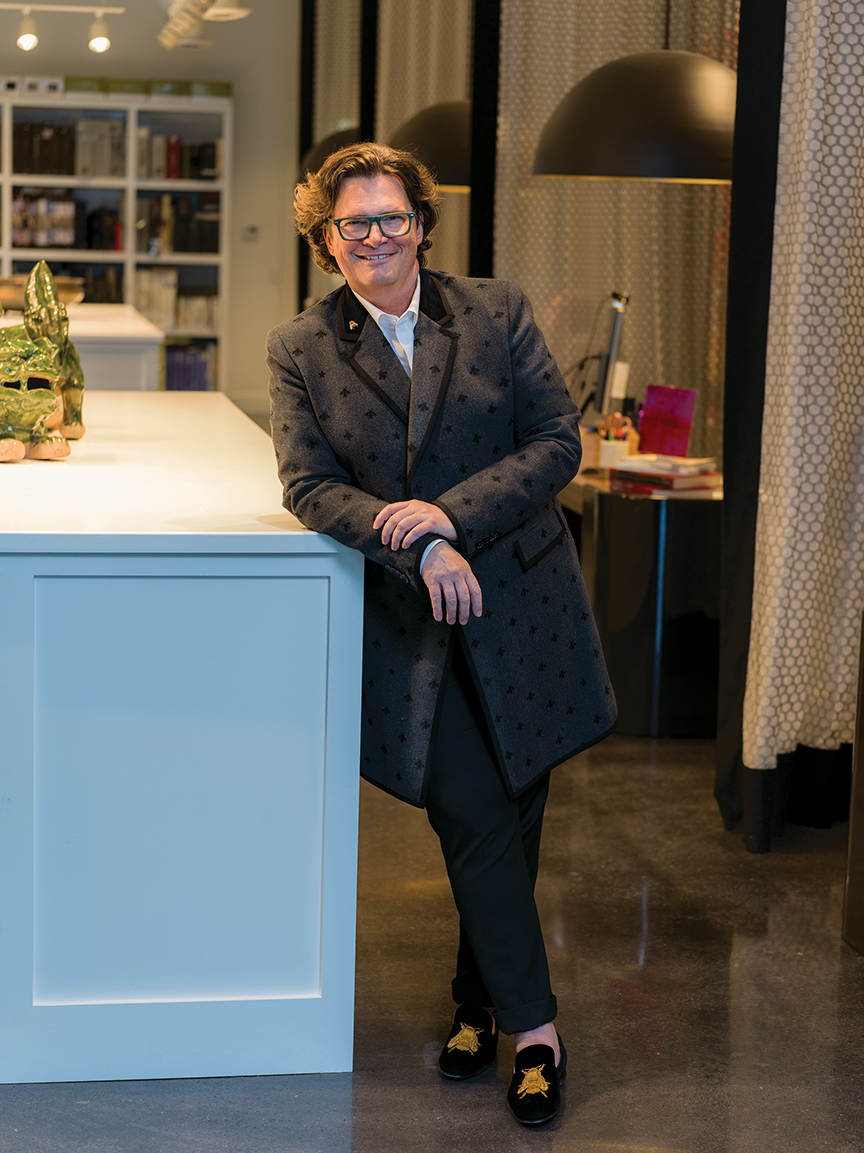
Photos by Mark Jackson/CHROMA Photography.
Designer Chris Goddard grew up in Arkansas in a house full of built-in furniture. As his love for design started early in life, he says this situation “drove me nuts.” Now, as the principal founder of Goddard Design Group, he credits these hurdles, as well as the creative nurturing of his family, for his love of change, which continues to inspire every facet of his work.
It was the need to produce something new every time, and the drive to push himself past his own creative limits, that helped Goddard become a finalist on the most recent season of HGTV’s Design Star: Next Gen.
We spoke with Goddard about his whirlwind experience of creating interior design for TV, and how his reality TV appearance inspired an even deeper love for design than he’d had in 30-plus years.
For those who haven’t watched the latest season of Design Star, can you relay to audiences your method of design?
I’m a big proponent of change, if you’re doing the same thing you did 3 years ago you’re doing something wrong. I never do the same thing twice, so in 30 years we’ve never used the same fabric twice, the same piece of furniture twice — it’s kind of my trademark. I don’t want anybody to have something somebody else has.
What has been your biggest inspiration, since you were young, to work in such a creative field?
I grew up in a very creative family, always surrounded by creativity and the arts. My family, especially my mother and my grandmother, were big on travel and exposing me to as much as possible. So I traveled a lot and spent a lot of time in museums. They would always take me out of school for weeks at a time; they always said ‘the best education was travel and experiencing things.’ I grew up a little globe-trotting kid, seeing the world, which was wonderful and super inspiring.
You received both design and business degrees in college. Have you found this type of structured education helpful as well?
I’ve found that having a business degree really makes a huge difference. Most designers are creative but can’t always run a business, and I’ve been able to strike a good balance. That’s not to say I haven’t ever screwed up — we all have — but those are called learning experiences.
You mentioned loving to travel, what’s one of your favorite places to visit?
One of my favorite places is Morocco. I try and go once a year. I’m super inspired by the colors and textures, anything that’s handmade. When you have something that’s made by hand, at least one thing in your house, it gives your house a soul and gives the room a sense of place, like it’s always been there. That’s my whole deal, creating timeless rooms. I don’t want anything to look like it was stuck in time, and the key to doing that is layering in parts of the past, present and modern so you get something that never really goes out of style.
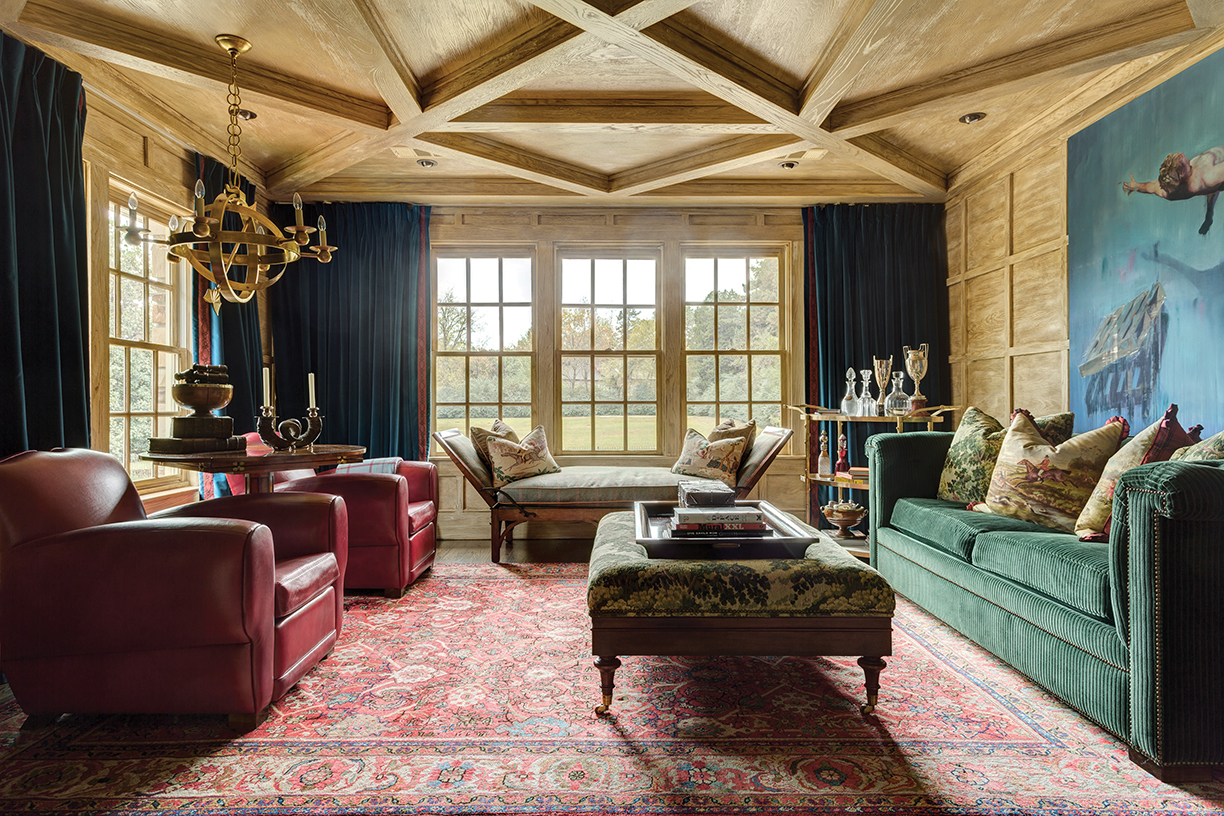
A traditional Southern estate with hints of modern elegance in Fort Smith, Arkansas.
What is your primary focus when you’re designing a space?
I’m designing for the client, or if it’s commercial, for the space. You want to create an experience that is singular to them. I think the death of most design is becoming a trend or doing anything trendy, so I always try to be very specific in what I’m doing and make sure it’s uber-tailored to the space or the client.
I think as a designer the biggest compliment I can ever get is when someone comes in and says “Oh this looks like the homeowner,” instead of “this looks like a Chris Goddard house.” The biggest compliment is that it’s a reflection of the homeowner or the space.
What was it like to be on an HGTV show? Did you enjoy your time on set?
When I started my business I taught myself how to do everything, how to put on wallpaper, how to paint — to be a good designer you have to have an understanding of all the people that work for you. I haven’t done that [in person] in over 25 years, but [on the show] it all came back to me like riding a bike. … Each episode was like a day and a half, so cranking everything out and then being judged on it was a little tricky. In our career, our clients are the judges and you kind of have an idea of what they want, but when you go into things blind, you don’t know.
For me it was more fun because I got to push myself out of my comfort zone, which I really needed. I kind of looked at the whole experience as an opportunity to reignite my passion for design. It’s easy when I get to the level I am at and get comfortable — and I think I was feeling a little comfortable — which was the reason I wanted to compete. Doing it, I came back and I couldn’t have been more excited about design than I had in my whole life. It was the best experience I could have ever had.
What lessons have you taken away from the experience?
It’s best to go with your first thoughts. If you get too much in your head, it throws off the creative process. Don’t be afraid to try anything new. The main thing [I learned], though, was to trust my gut, be authentic and keep pushing myself. And to learn something new. I learned so many new design tips, technology tips — everyone had so many things to share. It was nice to just be able to soak it all in.
How have things progressed since going back to the firm? Any big plans for the future?
I’m excited to see what happens in the next few years, as design is having a Renaissance. Right now we’re busier than ever, since people have been stuck in their homes and they see things they want to change. They want multifunctional spaces, beautiful spaces, there’s been this huge resurgence in an interest in design. The whole world is once again interested in how they live.
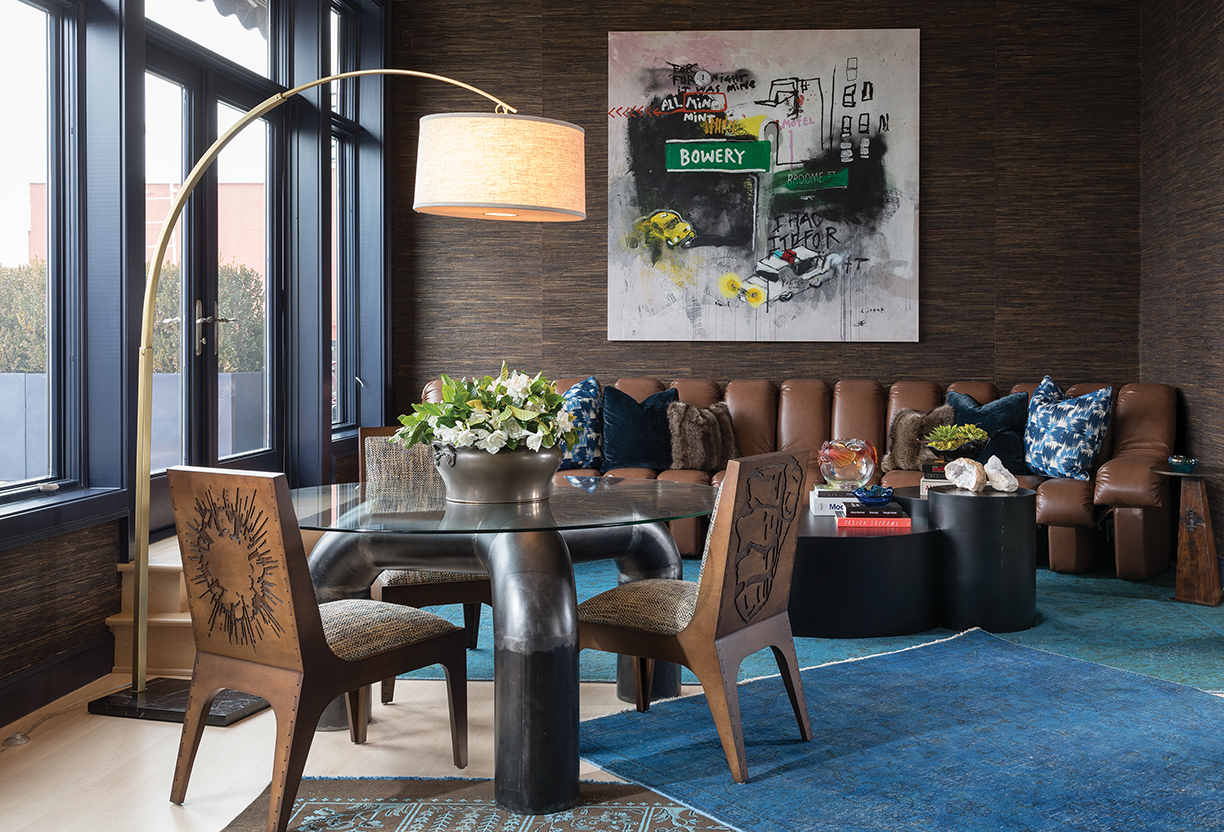
The design style of this home evolved from Spanish Mission into an eclectic mixture of modernism and neoclassical, created through thoughtfully curated collections, from vintage Chinese rugs to contemporary art.

A key component to the design of this Fayetteville penthouse was the incorporation of pieces from the client’s extensive modern art collection, seen above and below. “It was a lot of fun to pull modern furniture and art together to create a new space that still resonates our client’s unique, eclectic personality,” according to Goddard Design Group.
Top photo by Rett Peek Photography.
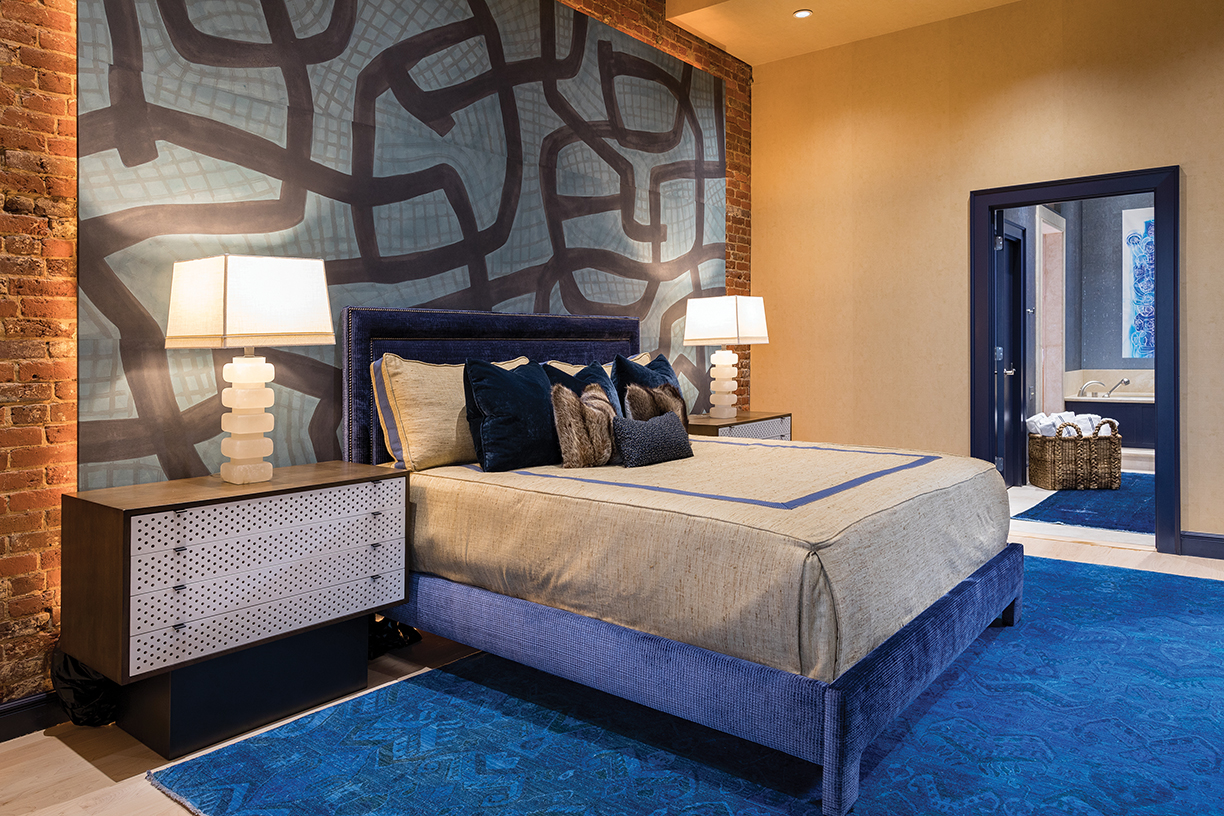
Like a butterfly opening its wings, two meticulously crafted oak and aluminium front covers fan out, and a thin screen rises to perfect viewing height.



Bang & Olufsen has unveiled Beovision Harmony — a TV experience that elevates the design of any living space and fills it with spectacular sound. When Beovision Harmony is turned off or just playing music, the thin screen rests close to the floor, partially covered by two meticulously crafted oak and aluminium front covers. When Beovision Harmony is turned on, the front covers fan out and the screen rises to the perfect viewing height. Turn off the TV, and the finely choreographed sequence plays out in reverse.
“Pristine picture performance combined with truly immersive sound ensures a mesmerizing viewing experience. But the presence of a big screen is rarely a welcoming addition to living spaces. With Beovision Harmony, we wanted to create a meaningful object for the interior that reduces the visual presence of the TV and transforms it into something that people will develop an emotional attachment to.” — John Mollanger, Bang & Olufsen’s executive vice president of brand and markets.
The oak and aluminium front covers conceal a sublime and powerful sound center, delicately tuned by hand and ear to reveal all details of music and sound. The intricate grading pattern is carefully designed to maximize the acoustic performance of the three-channel, fully active DSP-based sound center.
The concept behind Beovision Harmony builds on some of Bang & Olufsen’s most cherished products. The Capri series, introduced in 1959, was designed to fully integrate with the living room. Hence the TV was built in teak, which was the preferred wood for furniture at the time.
“We have been sharing an obsessive passion for almost 100 years, and it has been a mission of ours to perfect the techniques used to reproduce sound and vision and to embody it in a design that people are proud to have in their homes,” says Mollanger.
Beovision Harmony is designed as a centerpiece for home entertainment. Boasting a robust speaker system with serious sound capabilities, Beovision Harmony offers impressive music streaming with integrated music services like Tune-In and Deezer. Beovision Harmony also comes with LG’s most recent webOS 4.5 platform, which allows you to access your favorite media service providers.
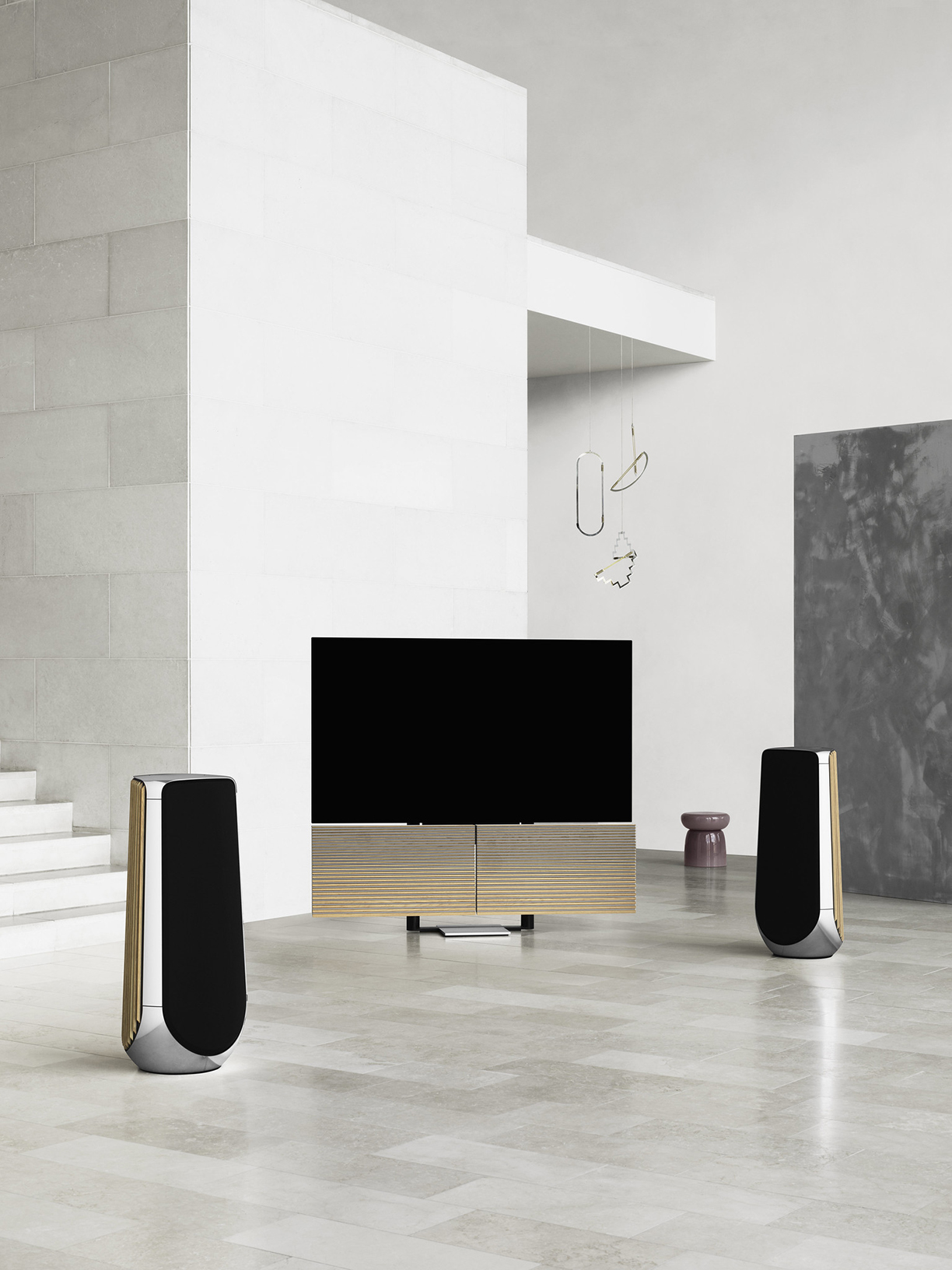
Images courtesy of Bang & Olufsen
Beovision Harmony is estimated to retail from €18,500 and will be available in Bang & Olufsen stores starting October 2019.



Actor Eddie Albert’s historic home is on the market for the first time in nearly 50 years, being offered at $19.5 million.
Abert was known to millions as Oliver Wendell Douglas on the vintage hit TV series Green Acres (1965), The Beverly Hillbillies (1962) and Petticoat Junction (1963).
He earned 2 Oscar nominations for his performances in Roman Holiday (1953) and The Heartbreak Kid (1972). He was also well known for his portrayal in many other films including The Switch, in which he co-starred with Robert Wagner and Sharon Gless.
Albert’s former home is currently owned by highly recognized landscape designer and philanthropist Jay Griffith. Majestically situated on a 33,000 square feet of stunning landscape, this pristine hacienda offers sweeping views of the mountains and the sea. Set back from the street, the gated and elevated setting affords a world of privacy. The beautiful lawn surrounds the pool and several outdoor pavilions.
The house itself, lovingly maintained in all its vintage glory, is virtually unchanged from the time it was built in 1933. It is complete with a 2-story entry, gorgeous living room with an oversized fireplace, vintage pub room, period fixtures and tile, and much more.
The property is co-listed by Fran Flanagan of Coldwell Banker Global Luxury and Brett Lawyer of Hilton & Hyland.



Photos courtesy of Luke Gibson
Game of Thrones has became one of most watched — and most talked about shows — in the U.S. For fans of the show, the dispute among the Houses, which fight fiercely for the dominion of The Seven Kingdoms, is nothing new.
Now, The Most Expensive Homes has taken the competition into real life.
Have you ever wondered which of your favorite characters — Jon Snow (Kit Harington), Daenerys Targaryen (Emilia Clarke) or Cersei Baratheon (Lena Headey) — has the best home?
Well, The Most Expensive Homes has the answer. Read the full story here.





